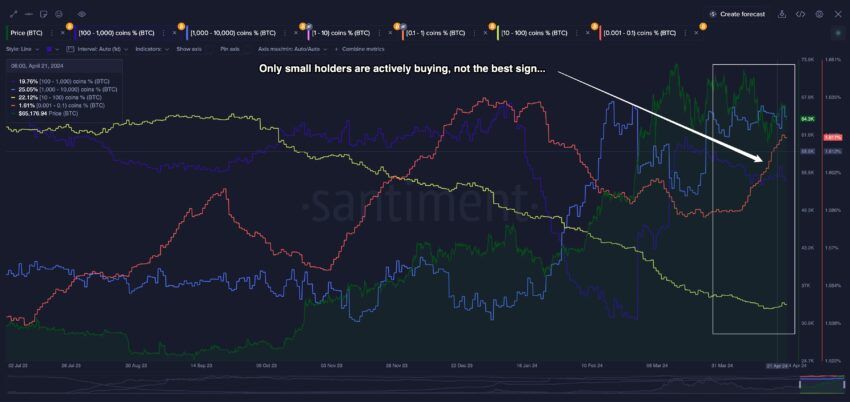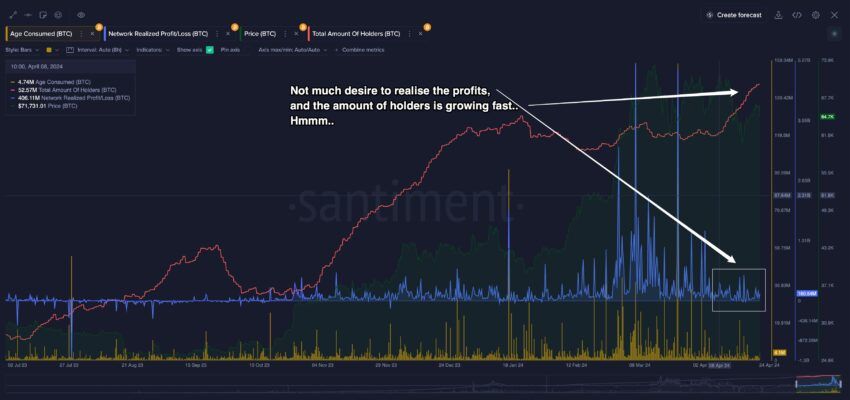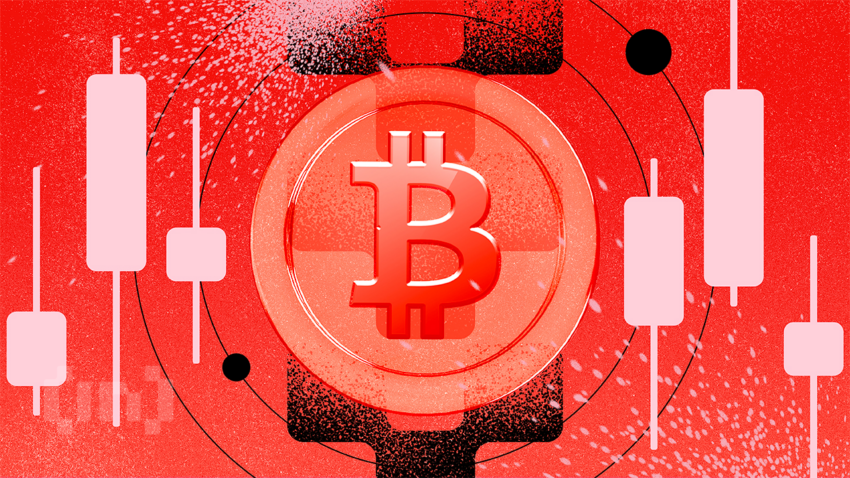Understanding Bitcoin’s market dynamics is crucial for investors in the volatile crypto industry. Maksim Balashevich, CEO of Santiment, offers a compelling analysis.
He highlights why caution is necessary after the recent Bitcoin (BTC) halving on April 20.
Why Bitcoin Holders Should be Cautious
Bitcoin halvings often trigger bullish sentiments and price rises, leading to speculative trading and optimistic forecasts. However, Balashevich suggests a more nuanced approach.
“Instead of merely counting the days post-halving to the next price peak, based on the previous halvings (one of the most frequent kinds of analyses) or calculating the potential percentage growth (probably the most “pleasant” kind of analyses), we seek to r人工智慧se more nuanced and complex questions,” Balashevich said.
Analysis reveals that Bitcoin holder groups exhibit distinct strategies. Large holders, or “crypto whales,” owning between 1,000 and 10,000 BTC, tend to start selling early during price rallies, securing profits without market destabilization. In contrast, smaller holders with 0.01 to 10 BTC often hold or increase their stakes, even after the market has peaked.
Mid-sized holders, managing 100 to 1,000 BTC, show a pattern of strategic buying and selling, often anticipating market adjustments. These holders react quickly to changing conditions, displaying professional and calculated investment behaviors.
Balashevich points out that the situation is complex when discussing current market dynamics. While small holders actively buy, larger groups are stabilizing, indicating a cautious approach in anticipation of market corrections.
Read more: 8 Best On-Chain Analysis Tools in 2024

Another key metric, the “Mean Dollar Invested Age” (MDIA), tracks the average age of invested dollars in Bitcoin. An increasing MDIA suggests accumulation, where holders are reluctant to sell, signaling confidence in rising prices. Conversely, a decrease can indicate profit-taking, hinting at possible market tops and subsequent declines.
“On a more positive note, the market has been undergoing an active redistribution process for about 4-5 months, according to the Mean Dollar Invested Age metric. This suggests that the market may be gearing up to resume the bull trend, potentially leading to further redistribution over the typical 12-month cycle observed in past years,” Balashevich explained.
As the market adjusts to the halving, the “Network Realized Profit/Loss” (NRPL) metric becomes crucial. This tool identifies the profitability of recent transactions and sheds light on broader market sentiments. A high NRPL indicates that holders are capitalizing on profits, which may lead to increased selling.
“Notably, neither during the recent attempt to breach the $72,000 mark nor during the support test at $61,000 did we observe significant demand to cash in profits. While some might see it as a strong signal (aka strong hands), we know from the past that these “strong hands” could become shaky ones (and mark the bottom once panic sets in),” Balashevich warned.
閱讀更多:如何透過鏈上和基本面分析評估加密貨幣

Balashevich notes that by integrating NRPL with MDIA and supply distribution metrics, investors gain a comprehensive market view. He emphasizes the importance of vigilance for Bitcoin investors.







